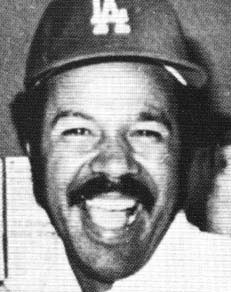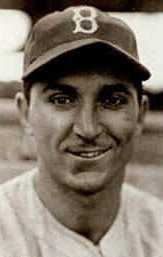Juan Marichal
 Although there were some noticeable specks of grey in his hair and he had a few wrinkles around his eyes and on his forehead, his proud, beaming face was easily recognizable.
Although there were some noticeable specks of grey in his hair and he had a few wrinkles around his eyes and on his forehead, his proud, beaming face was easily recognizable.His 37-year old body looked as fit as in years past, except for the makings of a slight paunch around his midsection.
And, most noticeably, he still had his greatly exaggerated high-leg kick pitch delivery that a few have attempted to duplicate but no one has been able to replicate.
Yet, Juan Antonio [Sanchez] Marichal just didn’t look right.
For one thing, he was wearing number 46 on the back of his jersey instead of his usual number 27. For another thing, he was now hurling pitches for the Los Angeles Dodgers instead of at them. And finally, and perhaps most exasperating, opposing batters were digging in and teeing off against him when they normally would have been ducking and running for cover.
Looking to fill a void in their starting rotation, the Dodgers signed Marichal to a one-year, $75,000 free agent contract prior to the 1975 campaign, even though the veteran right-hander was coming off an injury-plagued season.
Unfortunately, the gamble did not pay off.
Marichal made just two starts for Los Angeles, yielding nine runs on 11 hits and five walks while striking out just one batter in a mere six innings of work. His earned run average was a staggering 13.50 and his record was 0-1. Opposing batters hit an eye-popping .407 against him with a Ruthian slugging percentage of .704.
Clearly, he was no longer the same pitcher.
Not by a longshot.
Rooting for Marichal didn’t feel quite right, either. After all, this was the man who as a member of the San Francisco Giants 10 years earlier clubbed Dodger catcher John Roseboro with a baseball bat in one of the ugliest, most violent incidents in the history of the game.
Roseboro sustained a bloody two-inch gash and a large lump to his head during the fracass, while Marichal received a slap on the wrist: an eight-game suspension and a $1,750 fine.
Marichal claimed he retaliated after Roseboro had knicked his ear on a return throw to Koufax.
Roseboro sued Marichal for $110,000, but settled out of court years later for $7,500.
A native of Laguna Verde of the Dominican Republic, Marichal pitched in the major leagues for 16 seasons for three different teams, but it is as a member of the hated Giants that he will be remembered. In his career, he won 243 games and lost 142 for a sensational winning percentage of .631, while his ERA was a sparkling 2.89. He always appeared to be at his best when pitching against the Dodgers. He had a 37-18 lifetime mark against Los Angeles with an ERA of 2.36. He was elected to the Baseball Hall of Fame in 1983.
--------------------






